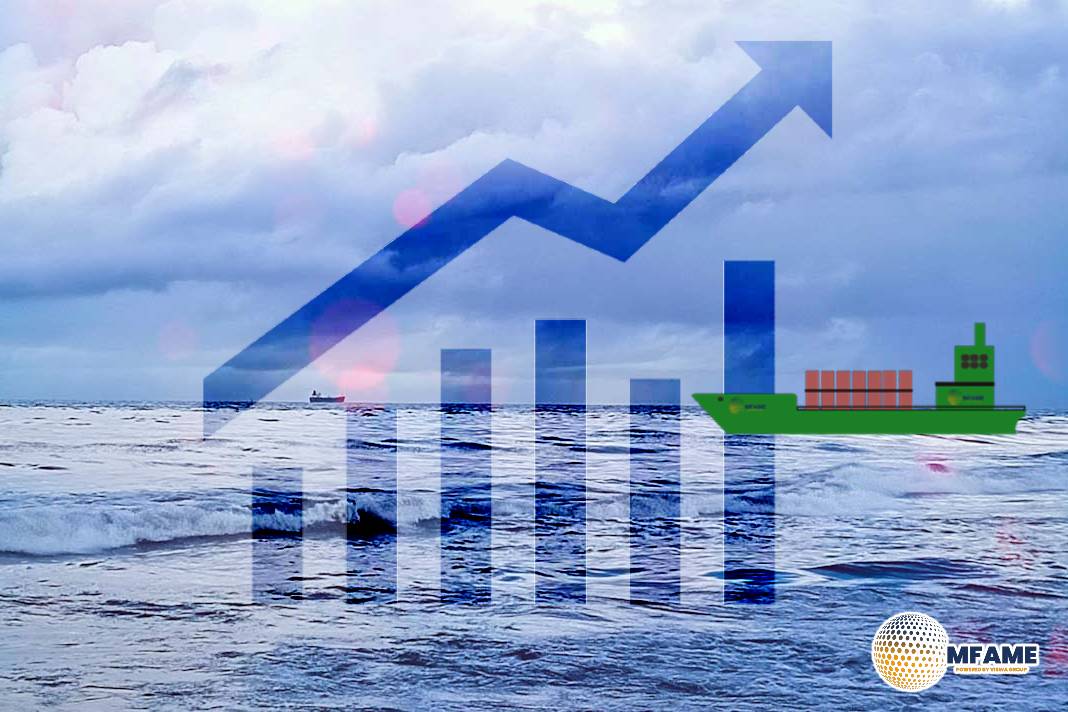 In a year reminiscent of Samuel Beckett’s “tragicomedy” Waiting for Godot, the Panamax market continues to mirror last year’s struggle for a substantial rally in the first trading month of the summer. Reflecting on the situation twelve months ago, the opening paragraph of Doric’s Weekly Insight noted: “In a year that resembles Samuel Beckett’s “tragicomedy” Waiting for Godot, week after week we have been awaiting a Panamax rally only to suffer from the harsh reality of a frugal market. The 82 Average index slipped by 8.5 percent W-o-W to $9,273 daily. This sentiment rings true once again as we navigate through the twenty-sixth trading week of the year.
In a year reminiscent of Samuel Beckett’s “tragicomedy” Waiting for Godot, the Panamax market continues to mirror last year’s struggle for a substantial rally in the first trading month of the summer. Reflecting on the situation twelve months ago, the opening paragraph of Doric’s Weekly Insight noted: “In a year that resembles Samuel Beckett’s “tragicomedy” Waiting for Godot, week after week we have been awaiting a Panamax rally only to suffer from the harsh reality of a frugal market. The 82 Average index slipped by 8.5 percent W-o-W to $9,273 daily. This sentiment rings true once again as we navigate through the twenty-sixth trading week of the year.
Staple grain and coal routes
Despite persistent efforts to find momentum, the Panamax vessels, essential for staple grain and coal routes, have struggled to catch a significant tailwind. The recent weeks have seen most of the gains made in mid-June unravel. Consequently, the Baltic Panamax 82 TCA index has decreased, closing today at $15,007 per day. While this represents a setback from recent highs, it is noteworthy that the index remains higher on a year-on-year basis, indicating a considerable improvement over the previous year. However, June’s performance has been below the average of the 2018-2022 period, with Panamax values lagging behind on most trading days compared to this historical average.
Grain trades, particularly in the tonne-mile demand, have always played a crucial role in the Panamax market. Recent data from LSEG trade flows highlight significant soybean movements to China. In May, China imported 9.64 million metric tonnes (MMT) of soybeans, with 1.53 MMT coming from the US and 8.11 MMT from Brazil. June saw an increase, with 10.52 MMT of soybeans arriving (0.51 MMT from the US and 9.88 MMT from Brazil). Looking ahead to July, even more substantial arrivals from South America are anticipated, including 10.41 MMT from Brazil, 1.22 MMT from Argentina, and 0.47 MMT from Uruguay. During the February to May period, Brazil’s soybean shipping pace slightly lagged behind last year’s record, totaling 48.13 MMT. The US continues to experience sluggish soybean exports, with only 1.29 MMT shipped in May. As of May 30, outstanding soybean sales were 3.42 MMT, an increase from last year’s 2.79 MMT but significantly below levels seen in previous years.
Regarding corn trading activity, Brazil has shipped 1.25 MMT of corn from March 1 to June 21, down from 1.86 MMT during the same period last year, according to LSEG Agriculture Flows. Looking ahead, exports during the peak season are expected to face constraints due to supply shortages. Meanwhile, Argentina recorded robust corn shipments totaling 10.74 MMT from March to May, nearly doubling last year’s volume of 5.47 MMT. Vietnam and Malaysia emerged as the top destinations for Argentine corn. LSEG forecasts a combined corn export volume of 77.4 MMT from Brazil and Argentina in the 2023/24 season, slightly lower than the 79.5 MMT exported in the previous season. Despite these regional adjustments, the US is poised for stronger exports in the upcoming season, buoyed by reduced competition from Brazil.
Regarding coal, Asia’s seaborne thermal coal imports are expected to decrease in June. According to data from commodity analysts Kpler, the region, which is the largest importer of this fuel for power generation, is projected to receive approximately 76.39 MMT. This figure represents a slight decrease from May’s 78.67 MMT but shows an increase from 74.81 MMT imported in June last year. The decline in June’s imports can largely be attributed to China, where seaborne thermal coal arrivals are anticipated to drop to 28.21 MMT, as reported by Kpler. This reduction is primarily due to increased hydroelectric generation. Similarly, India is expected to experience a decline during June, with estimated arrivals of 14.63 MMT, though still higher than the 13.43 MMT recorded in June last year. These trends do not necessarily indicate a decrease in electricity demand but rather reflect increased domestic coal production. In contrast, Japan is projected to import 7.65 MMT of thermal coal in June, up 22 percent M-o-M. South Korea’s imports are forecasted to reach 6.82 MMT, marking the strongest month since February. Taiwan’s estimated imports for June stand at 4.24 million tonnes, one of the highest records in the last nine months.
With the aforementioned dynamics at play, Kamsarmaxes averaged $15,910 daily for the first half of the current trading year, marking the highest average in the last two years. To find a more vibrant spot market for the first half of the year, one would have to look back to the Covid-stimulus-distorted 2022. This robust performance has generated high expectations for the remainder of the year, though recent downturns suggest that these expectations will need to be tested in the field.
Did you Subscribe to our daily newsletter?
It’s Free! Click here to Subscribe
Source: Breakwave

















